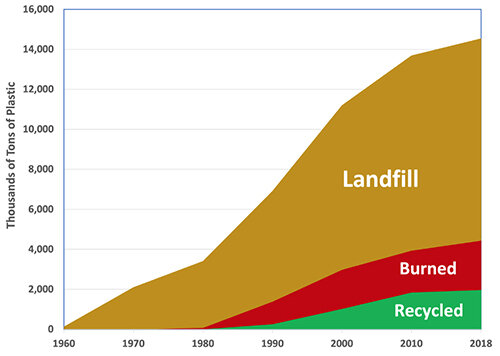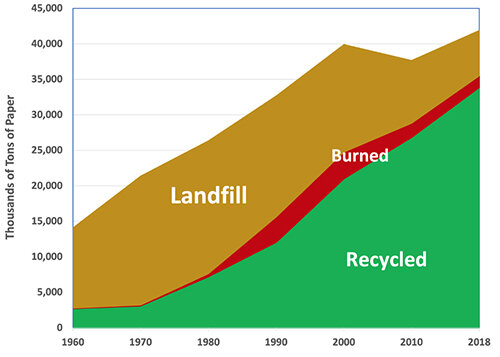Great Plastic Recycling Con Leaves Trail of Pollution
By ROGER WARBURTON/ecoRI News contributor
About 70 percent of all plastics end up in a landfill. Some 14
percent is recycled. About 16 percent is incinerated. These figures don’t
include the plastics swimming in waterways, hanging from trees, and blowing
around vacant lots.
Also, those little triangles at the bottom of plastics with
numbers inside don’t actually mean much. They’re nothing more than a con job by
the plastics industry and fossil-fuel companies — a green marketing tool to
manipulate the public.
The Environmental Protection Agency (EPA) has estimated that 14.5
million tons of plastic containers and packaging were generated in 2018. This
tonnage doesn’t include single-service plates and cups and trash bags, which
are classified as nondurable goods.
In contrast to plastics, about 97 percent of corrugated boxes are
recycled. In 2018, 32.1 million tons of corrugated boxes were recycled out of
33.9 million tons of total produced, according to the EPA.
About 80 percent of paper is recycled and 15 percent ends up in a landfill, according to the American Forest and Paper Association. (Roger Warburton/for ecoRI News)
Other paper and paper products include milk and juice cartons,
boxes, bags, and wrapping papers. The overall recycling rate for all those
paper products was 81 percent in 2018, according to the American Forest and
Paper Association. A small proportion was burned — 4 percent — and only 15
percent ended up in a landfill.
China shut its doors to plastic trash more than two years ago, and
most recycling operations now have no option but to dump much of this collected
material in a landfill.
The issue of overwhelming plastic pollution was brought into focus
last year. PBS’s Frontline produced a documentary called Plastic Wars, which explored how, in the 1990s
and 2000s, much of this waste was shipped overseas to be recycled in China.
An investigation by NPR
found that the chemical industry knew that plastic recycling wouldn't work, but
it was — and still is — making billions of dollars selling the world new
plastics. The public was conned into believing that recycling would keep
plastic out of landfills — and the environment.
In the mid-1970s there was serious doubt as to whether recycling
plastic could ever be economically viable. By the 1980s, the industry was in a
crisis, as there was too much plastic waste. Congress was considering
legislation to ban or curb the use of plastics. The public was upset.
As a result, the chemical industry began a $50-million-a-year
advertising campaign that encouraged consumers to recycle. Exxon, Chevron, Dow,
DuPont, and their lobbyists spent tens of millions of dollars on ads, and ran
them for years, even while knowing recycling was a mostly fruitless endeavor.
There are several fundamental problems with plastic recycling.
While some plastics can be turned into new things, collecting it, sorting it,
and melting it is expensive. There are hundreds of types of plastics, and they
can’t be melted down together. Also, plastic degrades each time it’s reused and
can’t be reused more than once or twice.
These problems have been known for decades and less than 10
percent of all plastic has ever been recycled.
Plastics are hugely profitable. The fossil-fuel industry makes
more than $400 billion annually manufacturing plastic, and, as demand for
gasoline, diesel, and other petroleum products declines, the industry is
telling shareholders that future profits will increasingly come from plastic.
Analysts now expect plastic production to triple by 2050.

